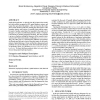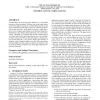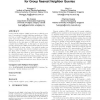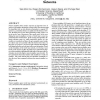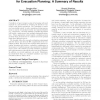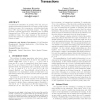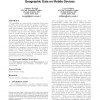113
click to vote
GIS
2005
ACM
15 years 3 months ago
2005
ACM
Topological predicates, as derived from the 9-intersection model, have been widely recognized in GIS, spatial database systems, and many other geo-related disciplines. They are ba...
120
click to vote
GIS
2005
ACM
15 years 3 months ago
2005
ACM
An interesting issue in moving objects databases is to find similar trajectories of moving objects. Previous work on this topic focuses on movement patterns (trajectories with tim...
114
click to vote
GIS
2005
ACM
15 years 3 months ago
2005
ACM
Group nearest neighbor (GNN) queries are a relatively new type of operations in spatial database applications. Different from a traditional kNN query which specifies a single quer...
112
click to vote
GIS
2005
ACM
15 years 3 months ago
2005
ACM
Nearest neighbor (NN) searches represent an important class of queries in geographic information systems (GIS). Most nearest neighbor algorithms rely on static distance informatio...
109
click to vote
GIS
2005
ACM
15 years 3 months ago
2005
ACM
Contraflow, or lane reversal, is a way of increasing outbound capacity of a real network by reversing the direction of inbound roads during evacuations. The contraflow is consider...
116
click to vote
GIS
2005
ACM
15 years 3 months ago
2005
ACM
Georeferenced information is growing every day, and geographical information systems are becoming crucial in many decision processes. As a consequence, extracting knowledge from G...
GIS
2005
ACM
15 years 3 months ago
2005
ACM
125
click to vote
GIS
2005
ACM
15 years 3 months ago
2005
ACM
Information about dynamic spatial fields, such as temperature, windspeed, or the concentration of gas pollutant in the air, is important for many environmental applications. At th...
GIS
2005
ACM
15 years 3 months ago
2005
ACM
The capabilities of current mobile computing devices such as PDAs and mobile phones are making it possible to design and develop mobile GIS applications that provide users with ge...
112
click to vote
GIS
2005
ACM
15 years 3 months ago
2005
ACM
Several application contexts require the ability to use together and compare different geographic datasets (maps) concerning the same or overlapping areas. This is for example the...
